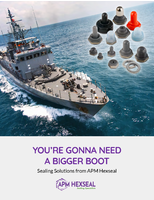New NEMA Test Standards Measure Performance Parameters Governing Image Quality of MRI Systems
ROSSLYN, Va., July 25, 2006-The National Electrical Manufacturers Association (NEMA) has published four standards that are part of a series of test standards developed by the medical diagnostic imaging industry for the measurement of performance parameters (e.g., noise levels, energy deposition, and electric field strength) that govern image quality of magnetic resonance imaging (MRI) systems.
MS 4-2006, Acoustic Noise Measurement Procedure for Diagnostic Magnetic Resonance Imaging Devices, has been revised. MS 10-2006, Determination of Local Specific Absorption Rate (SAR) in Diagnostic Magnetic Resonance Imaging, MS 11-2006, Determination of Gradient-Induced Electric Fields in Diagnostic Magnetic Resonance Imaging, and MS 12-2006, Quantification and Mapping of Geometric Distortion for Special Applications, are brand new.
These test standards are intended for use by equipment manufacturers, testing houses, prospective purchasers, and users alike. Manufacturers are permitted to use these standards for the determination of system performance specifications. This standardization of performance specifications is of benefit to the prospective equipment purchaser. The parameters supplied with each NEMA measurement serve as a guide to those factors that can influence the measurement. These standards can also serve as reference procedures for acceptance testing and periodic quality assurance. Often, they form the basis for federal regulations.
MS 4 has undergone a substantial revision because the gradient performance of modern MRI scanners has advanced significantly, making some basic assumptions and guidance in the original standard obsolete.
MS 10 is used for measuring local regions of high Specific Absorption Rate (SAR) from radiofrequency (RF) power deposition. NEMA standard MS 8 is useful for measuring whole-body average SAR. By using both MS 8 and MS 10, it is possible to completely characterize RF power deposition both whole-body and local. "Research has demonstrated that localized heating is a limiting safety factor in MRI and it is becoming increasingly important to characterize this local heating as MRI technology advances," says Michael Steckner of Hitachi Medical Systems and a member of the NEMA Magnetic Resonance Technical Committee. "This standard provides the tools to experimentally measure localized heating, complementing the MS 8 standard and thereby extending and enhancing our understanding of this important safety issue."
MS 11 presents a measurement method for determining gradient-induced electric fields, which affect the safety and comfort of patients. "As gradient system performance increases, there is also a need for experimental tools to quantify the gradient induced electric fields," says Steckner. "MS 11 provides the tools to experimentally measure these electric fields and complements the international MR safety standard, IEC 60601-2-33 (2002), which sets limits for patient safety and comfort."
The demand for medical imaging is increasing both in volume and scope, requiring a detailed analysis of MRI scanner geometric distortion characteristics for some of the new special applications. MS 12 provides a series of recommendations on how to measure and present the distortion analysis information in order to meet this growing need.
MS 4-2006 may be purchased for $49.00 by visiting nema.org/stds/ms4.cfm; MS 10-2006 may be purchased for $49.00 by visiting www.nema.org/stds/ms10.cfm; MS 11-2006 may be purchased for $44.00 by visiting www.nema.org/stds/ms11.cfm; MS 12-2006 may be purchased for $49.00 by visiting www.nema.org/stds/ms12.cfm, or by contacting Global Engineering Documents at (800) 854-7179 (within the U.S.), (303) 397-7956 (international), (303) 397-2740 (fax), or on the Internet at global.ihs.com.
NEMA is the trade association of choice for the electrical manufacturing industry. Founded in 1926 and headquartered near Washington, D.C., its 430 member companies manufacture products used in the generation, transmission and distribution, control, and end-use of electricity. These products are used in utility, medical imaging, industrial, commercial, institutional, and residential applications. Domestic production of electrical products sold worldwide exceeds $120 billion. In addition to its headquarters in Rosslyn, Virginia, NEMA also has offices in Beijing, Sao Paulo, and Mexico City.
Jason Peak
Senior Editor
(703) 841-3222
jas_peak@nema.org




